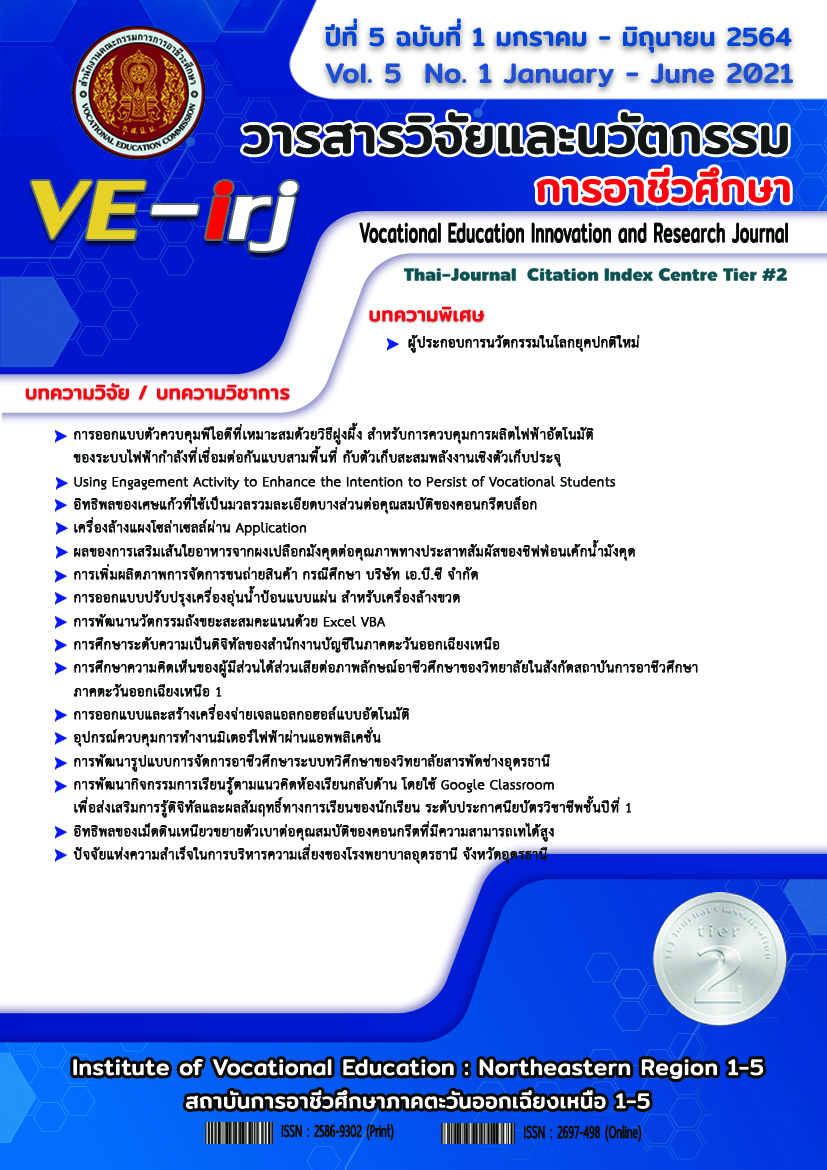Influence of Lightweight Expanded Clay Aggregate on Properties of High Workability Concrete
Main Article Content
Abstract
The present research aims at investigating the influence of lightweight expanded clay aggregate (LECA) on properties of high workability concrete. In the experimental, natural coarse aggregate (crushed limestone) was replaced by the LECA at replacement ratio of 16, 32, and 47 percent (by weight), while the control concrete mixture contained only crushed limestone as coarse aggregate. Concrete properties investigated in this work included slump flow of fresh concrete, and density, compressive strength, and autogenous shrinkage of hardened concrete. Test results revealed that the replacement of crushed limestone by the LECA led to the increase in slump flow spread, and the decrease in density and compressive strength of the concrete. Concrete with 32% LECA exhibited the highest slump flow spread and 28-day compressive strength. Concrete with 47% LECA had the lowest density which is 18.7% lower than that of the control mixture. It was also found that concrete with 32% and 47% LECA resulted in higher autogenous shrinkage in 28 days, as compared to the control concrete.
Article Details
สงวนสิทธิ์ โดย สถาบันการอาชีวศึกษาภาคตะวันออกเฉียงเหนือ 1
306 หมู่ 5 ถนนมิตรภาพ หนองคาย-อุดรธานี ตำบลโพธิ์ชัย อำเภอเมืองหนองคาย จังหวัดหนองคาย 43000
โทร 0-4241-1445,0-4241-1447
ISSN : 3027-6861 (print) ISSN : 3027-687X (online)
References
M.F.M. Zain, Md. Safiuddin, and K.M. Yusof. "A study on the properties of freshly mixed high-performance concrete". Cement and Concrete Research, 29(9), pp. 1427-1432, 1999.
M.R. Ahmad, B. Chen, and S.F. Ali Shah. "Investigate the influence of expanded clay aggregate and silica fume on the properties of lightweight concrete". Construction and Building Materials, 220, pp. 253-266, 2019.
J. Newman and B.S. Choo. Advanced Concrete Technology: Processes. Butterworth-Heinemann-An imprint of Elsevier Linacre House, 2003, pp. 2/3-2/25.
K.H. Yang, G.H. Kim, and Y.H. Choi. "An initial trial mixture proportioning procedure for structural lightweight aggregate concrete". Construction and Building Materials, 55, pp. 431-439, 2014.
A.M. Rashad. "Lightweight expanded clay aggregate as a building material-An overview". Construction and Building Materials, 170, pp. 757-775, 2018.
D. Joz?wiak-Niedz?wiedzka. "Scaling resistance of high-performance concretes containing a small portion of pre-wetted lightweight fine aggregate". Cement and Concrete Composites, 27, pp.709-715, 2005.
D. Shebannavar Hanamanth, P. Maneeth, and S. Brijbhushan. "Comparative study of LECA as a complete replacement of coarse aggregate by ACI method with equivalent likeness of strength of IS method". Int. Res. J. Eng. Tech., 2(8), pp. 589-594, 2015.
A.A. Maghsoudi, Sh. Mohamadpour, and M. Maghsoudi. "Mix design and mechanical properties of self-compacting light weight concrete". Int. J. Civ. Eng. 9(3), pp.230-236, 2011.
Lakshmi P. Pavithra, A. Kaethika, and K. Mahendran. "Experimental investigation on flexural properties of lightweight concrete using steel scraps". SSRG Int. J. Civ. Eng., pp.566-570, 2017.
S. Sivakumar, and B. Kameshwari. "Influence of fly ash, bottom ash, and light expanded clay aggregate on concrete". Adv. Mater. Sci. Eng., pp.1-9, 2015.
N. Salem, M. Ltifi, and H. Hassis. "Characterization of lightweight aggregates manufactured from Tunisian clay". J. Sci. Res., 7, pp.43-51, 2014.
H.Z. Cui, T.Y. Lo, S.A. Memon, and W. Xu. "Effect of lightweight aggregates on the mechanical properties and brittleness of lightweight aggregate concrete". Construction and Building Materials, 35, pp.149-158, 2012.
จิรัฐิติ์ บรรจงศิริ, "การศึกษากำลังรับแรงอัดของคอนกรีตจากมวลรวมหยาบประดิษฐ์", เอกสารประกอบการประชุมวิชาการระดับชาติ มหาวิทยาลัยเกษตรศาสตร์ วิทยาเขตกำแพงแสน ครั้งที่ 11, พ.ศ.2557, หน้า 2077-2085.
Thai Industrial Standard Institute. "TIS 15: 2555 Thai standard for Portland cement: Part I specification". TISI, 2012.
ASTM C1611 / C1611M - 18. "Standard Test Method for Slump Flow of Self-Consolidating Concrete". ASTM International, 2018.
British Standard Institute. "BS EN 12390-3: Testing hardened concrete. Compressive strength of test specimens". BSI, 2009.
ASTM C157 / C157M-17. "Standard Test Method for Length Change of Hardened Hydraulic-Cement Mortar and Concrete". ASTM International, 2017.
ชนานนท์ สิงห์คศิริ และ มงคล นามลักษณ์, "ผลกระทบของระยะเวลาบดเถ้าแกลบที่มีต่อการหดตัวแบบออโตจีนัสและกำลังอัดของคอนกรีตผสมเถ้าแกลบ",วารสารวิศวกรรมศาสตร์ มหาวิทยาลัยเชียงใหม่, ปีที่ 25, พ.ศ.2561, หน้า 232-241.
J.A. Bogas, R. Nogueira, and N.G. Almeida. "Influence of mineral additions and different compositional parameters on the shrinkage of structural expanded clay lightweight concrete". Materials & Design, 56, pp. 1039-1048, 2014.


